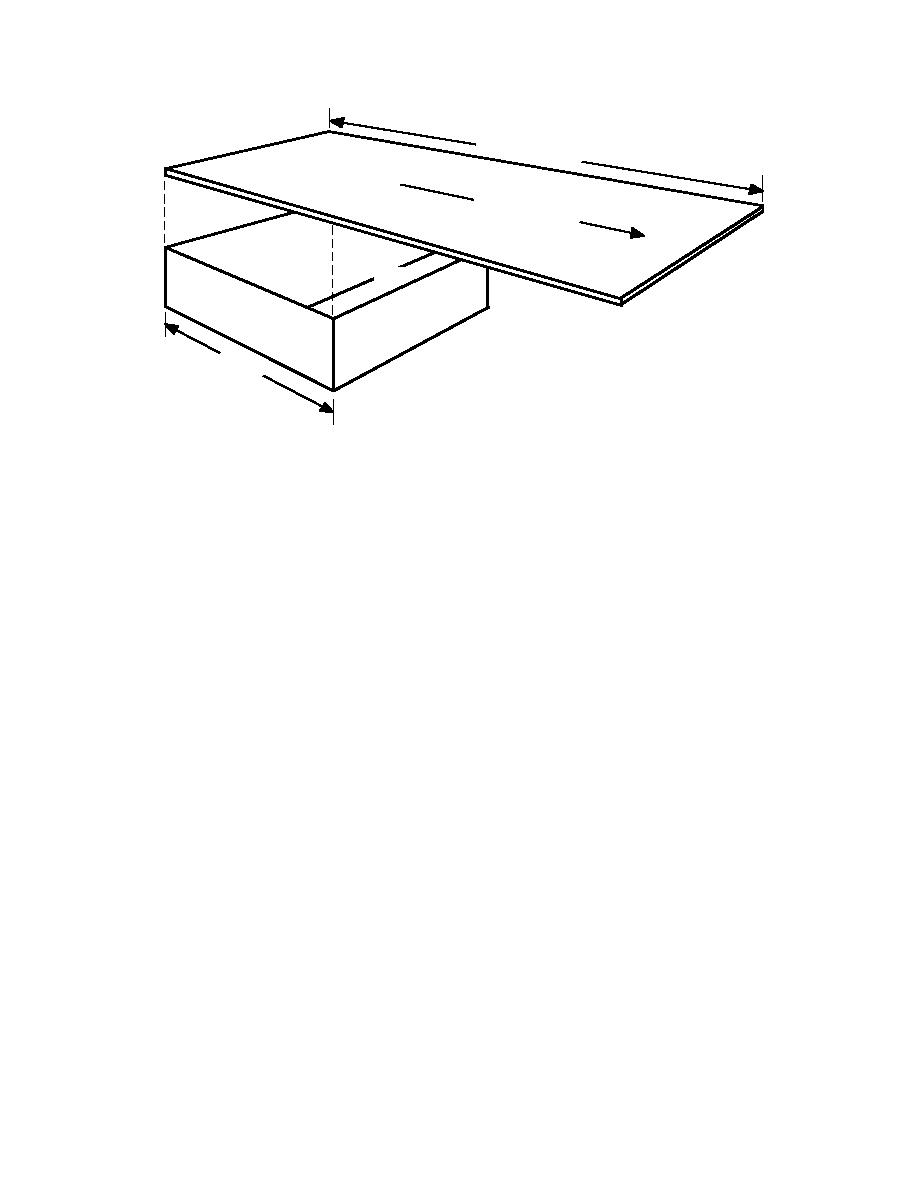
2X Len
gth + 1
in.
Layin
gD
irectio
n
Bond Area
Tape
Le
ng
th
Figure 1. Fabrication of test specimens.
Cut beams into 6- 6.38-in. (15.2- 16.2-cm)
Blister mechanics
slices.
In a related study, Korhonen (1986) pointed out
Sand slices (slabs) with 24-grit silicon-carbide
that roof membrane blisters develop from voids
sandpaper until surface is flat and all saw marks
built into a roof during construction. There is no
are removed.
reason to suspect that bridge blisters are any dif-
Oven dry the mortar slabs at 220F (104C) for
ferent. They probably are caused by the expansion
24 hours.
of air pockets inadvertently trapped between the
Clean sanded surface with dry, stiff fiber bristle
membrane and the concrete deck during construc-
brush.
tion. Roughness of the concrete deck, unevenly
Place 0.75-in. wide strip of tape across one end
applied or inadequately cured primer, debris, and
of slab.
moisture are among a number of reasons that can
Apply primer to the test surface.
impair the adhesion of a membrane to a deck and
Allow primer to cure to a tack-free finish.
lead to blister-causing voids. On the other hand, a
Apply membrane according to manufacturers'
perfectly adhered membrane (if it exists) cannot
instructions.
blister.
Condition specimens at approximately 70F
Fortunately, a membrane does not have to be
(21C) and 50% RH (relative humidity) for a
perfectly adhered to a deck. Mathematically, it can
minimum of 14 days.
be shown that some voids are acceptable. When
Cut membrane into five 1-in.- (2.5-cm) wide
blisters form, they appear as slightly bloated
strips through to the mortar with a sharp razor
humps--in the membrane or the overlying pave-
knife.
ment--several inches to a foot or two in diameter.
Start cuts 0.50-in. (1.3 cm) from edge of slab.
They often occur soon after the membrane is laid
or immediately after hot-mix pavement is placed
Figure 2 shows the test setup. Five strips of
on top of the membrane. As eq 1 shows, growth
membrane were peeled off each slab back at an
happens only when the air inside a void is heated
angle of 180 at a grip separation rate of 4 in. (10.2
sufficiently to push the overburden upward and
cm)/min. Force and grip displacement were re-
peel it off the deck:
corded for each strip. Slippage in the grips and
membrane stretching are discounted, grip dis-
F = (PA WA)/L
(1)
placement is exactly twice membrane displace-
ment. Before discussing the significance of the ad-
hesion test data, we will first consider the
where F = membrane-to-deck peel strength
mechanics of blistering.
P = internal pressure
3





 Previous Page
Previous Page
